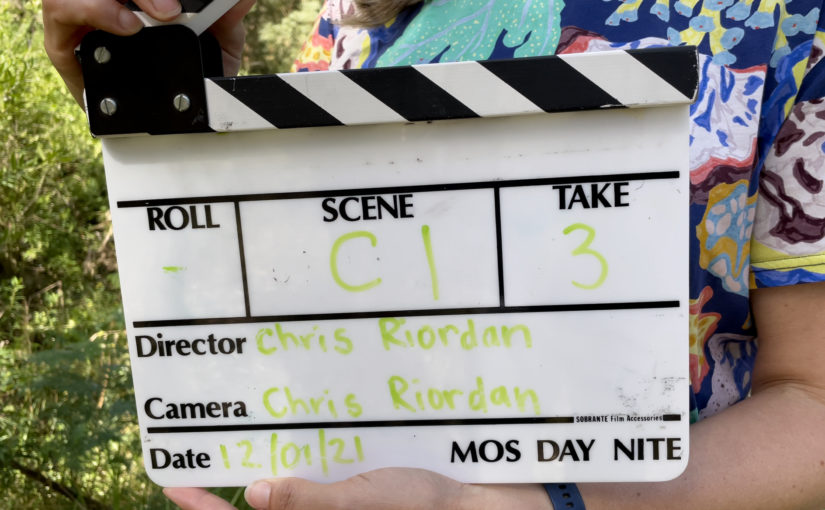I often like to compare making a video to baking a cake; they both have a range of ingredients, you can make them in a variety of ways…and when they go wrong, everyone is looking for someone to blame!
But most of all, if you’ve never made a cake and someone showed you some eggs, flour, butter and milk on a bench…you’re unlikely to say ‘I can totally see how this is going to be a delicous cake!’
Similarly with video, if you’ve never made a video, it can be very hard to look at a very rough cut of a video and imagine what the final product is going to be like.
Given that the majority of people who are approving your video have never made one, when is the best time to show them the video to get their approval?
Stage 1 – The ingredients and the assets

Just as there is no use in asking someone to have a spoonful of cocoa and a raw egg and hope they will approve of your culinary skills, asking for approval based on interview footage and a guide music track is a complete waste of everyone’s time.
So I’m going to ignore this as an option.
Stage 2 – The batter and the rough-cut

In cake terms, this where you’ve mixed all of your ingredients together…but it hasn’t gone into the oven.
In video terms, this is where you’ve got your rough narrative (ie you’ve edited the interviews down to what is going to be said in your video), you’ve got some basic cutaway footage (the footage that is going to visually tell the story of the video) and you’ve got a music track as a reference (the music tends to drive the emotion of the video).
Seeking approval here can be a really good option if you’re not sure about the narrative of the video. In non-scripted videos (which is the vast majority of the work that my team does), you’re at the mercy of what your interviewees have said, and so sometimes the narrative of the video can be different to what was initially intended (and more importantly, what those further up the approval chain were expecting). So getting it approved now can save you a world of pain if you keep working on the wrong narrative…only to find you have to go back to the drawing board after the first person who sees is says ‘NO!’
A chocolate cake can take on feedback and become a jaffa-cake really easy at this stage by just adding some organge juice and rind…but it’s a LOT harder to make it a jaffa cake if you’ve already baked it!
The counter-point to this, is that for someone expecting a cake…it looks nothing like a cake! If the person approving this is expecting a video, and instead sees something with minimal cutaway footage, terrible transitions and a music track with a digital watermark*, they will freak-out and start distancing themselves from the video. People who have made it to a point in an organisation where they can approve things before the public see them…haven’t got there by associating themselves with failed products. So if you lose them now, you’re unlikely to get them back on board!
Also, if a video doesn’t look like a finished product, people are a lot more comfortable suggesting wholesale changes (after all, there can’t have been much work gone into this if it looks so average!), so offering it around for approvals at this stage, may lead to more work than is necessary.
* if you’re using music from an online music provider, you normally download a free version of the track to edit to and then purchase the track when the video is approved. To make sure you can’t use the free download version most companies have a recording of their name spoken throughout the track so that it’s unusable.
Stage 3 – Baking and the real edit

This is possibly where the cake analogy falls apart. With the cake, you’re basically just throwing it in the oven, waiting, and then taking it out. With a video, you’re adding all of the cutaway footage, adding in the transitions, making sure edit points work to the music track, adding in graphics, and basically doing all of the things that make a video work as piece of communication.
But, whether it’s for the cake or the video…this is going to be the most time consuming part.
For me, this is when you want to present the video for approvals. This is pretty much exactly as you want the video to look, and is also what the untrained eye expects when they look at the video. By showing the video now you’re basically saying ‘This is what is going to be said, and this is the vision that’s going to accompany it. Are you OK with this?’ Not ‘This is kinda how it’s going to look…but it will be better…and this is what we’re probably going to say…what do you reckon?’
Now clearly, you have spent a lot of time getting it from ingredients, to batter to this…and if you’re only now presenting it for approval and someone says ‘This was meant to be a flourless orange cake’…or ‘You know that the audience is allergic to eggs right?’ Then yes, you are going to have to go right back to the drawing board and start from scratch. And yes, you could have saved a decent amount of time by presenting it for approval earlier. But in reality, if you’ve misread the brief this badly, you may need to look at your pre-production process.
In my experience, most of the time when presented with the choice between; a video they can use right now that they’re 90% happy with, or a waiting a week for a new version to approve…they will go with the one that they can use right now.
Stage 4 – The icing on the cake and the final export

Now look, cake by itself is pretty great…but add the right icing and you’ve got a masterpiece! Similarly, with a video, it’s stuff that you do now that will take your video from ‘good’ to ‘great’! Doing a colour grade, animating some graphics, creating captions and making a bespoke thumbnail, are the finishing touches that make you a professional.
I’m yet to achieve the level of chutzpah that would allow me to deliver a video at this stage for approval, as there is just WAY too much work being done before you take on feedback…but if you can…then shine on you crazy diamond!!
So there you go. Getting approvals for a creative project (especially within Government) can be a real balancing act. Getting approvals too early can see people distancing themselves from the project, or requesting unnecessary changes. Getting approvals too late, can mean that all of your work has been for nothing as you’ve headed down the wrong path and now have to re-trace your steps.
But in my experience, erring on the side of doing more work and being able to present a video that is as close as possible to a finished product, is often what gets it across the line.
Am I suggesting that this will work every time? No.
Could there be factors in your work environment that make this approach unfeasible? Yes.
Do I have a therapists worth of projects that have had to be re-done or scrapped altogether? Yes.
But most importantly, do I now have a delicious cake to eat as a result of my wife making one for the photos in this blog? Yes…so I will see you next week, when I talk about being a creative person in a bureaucracy.




